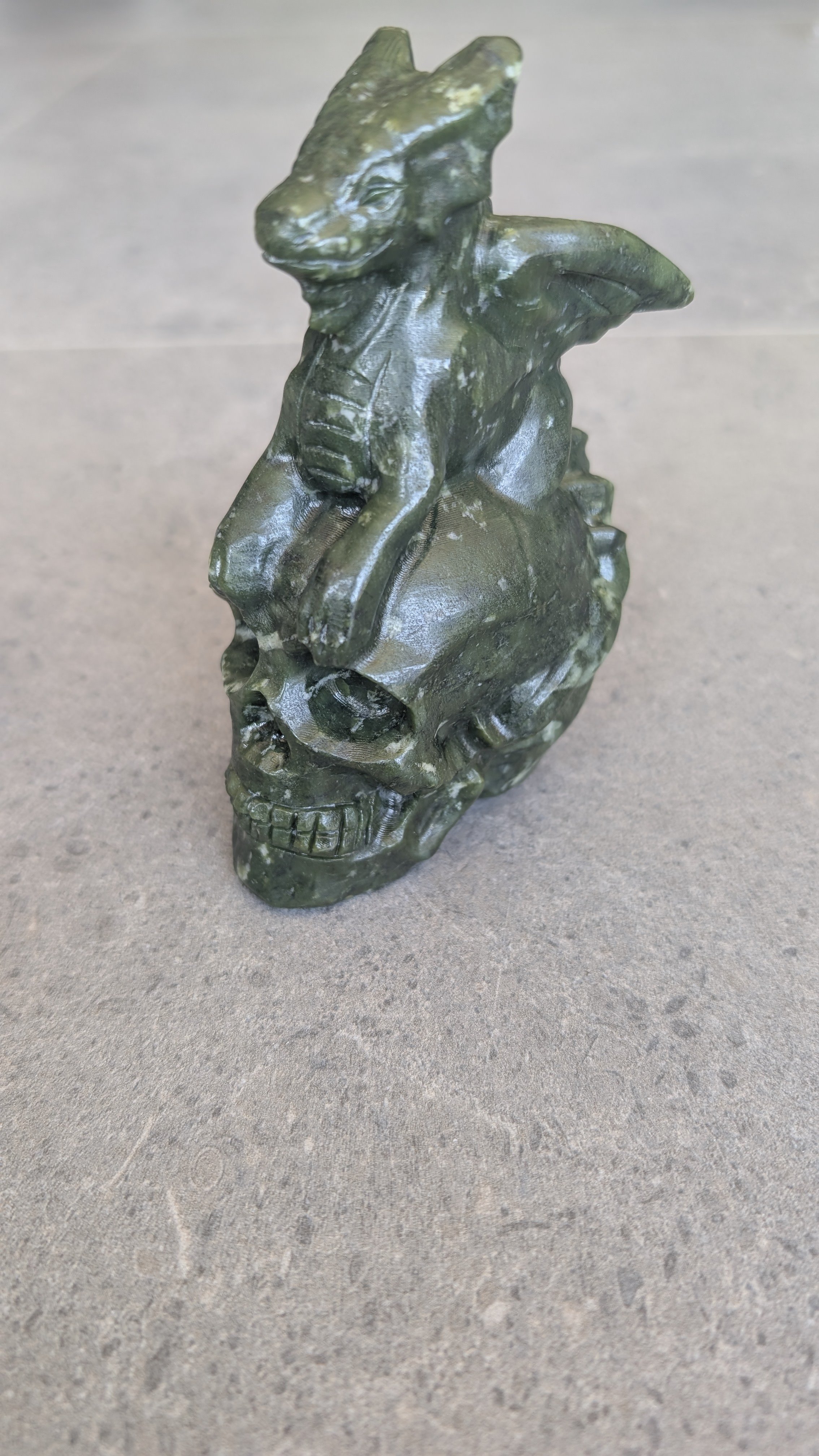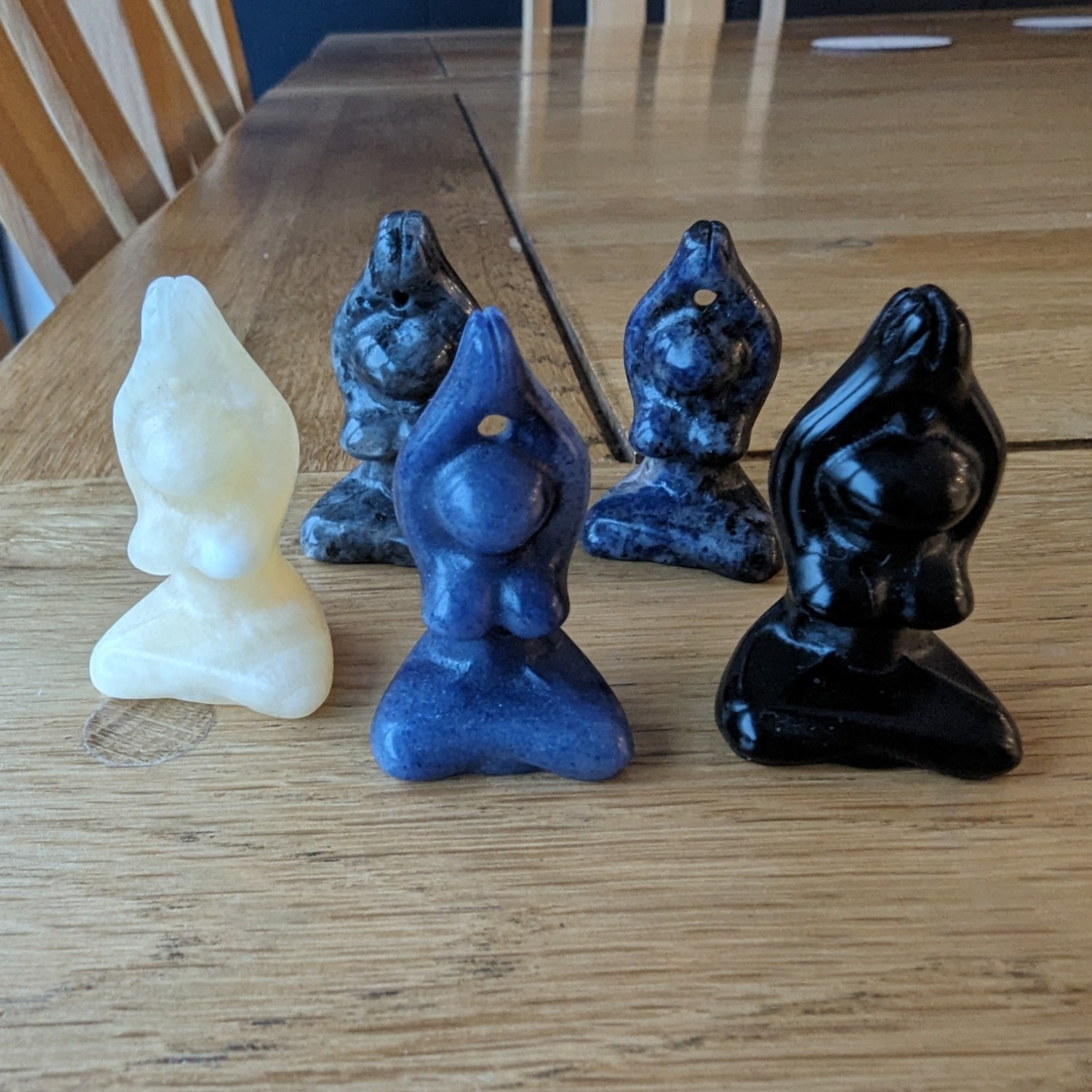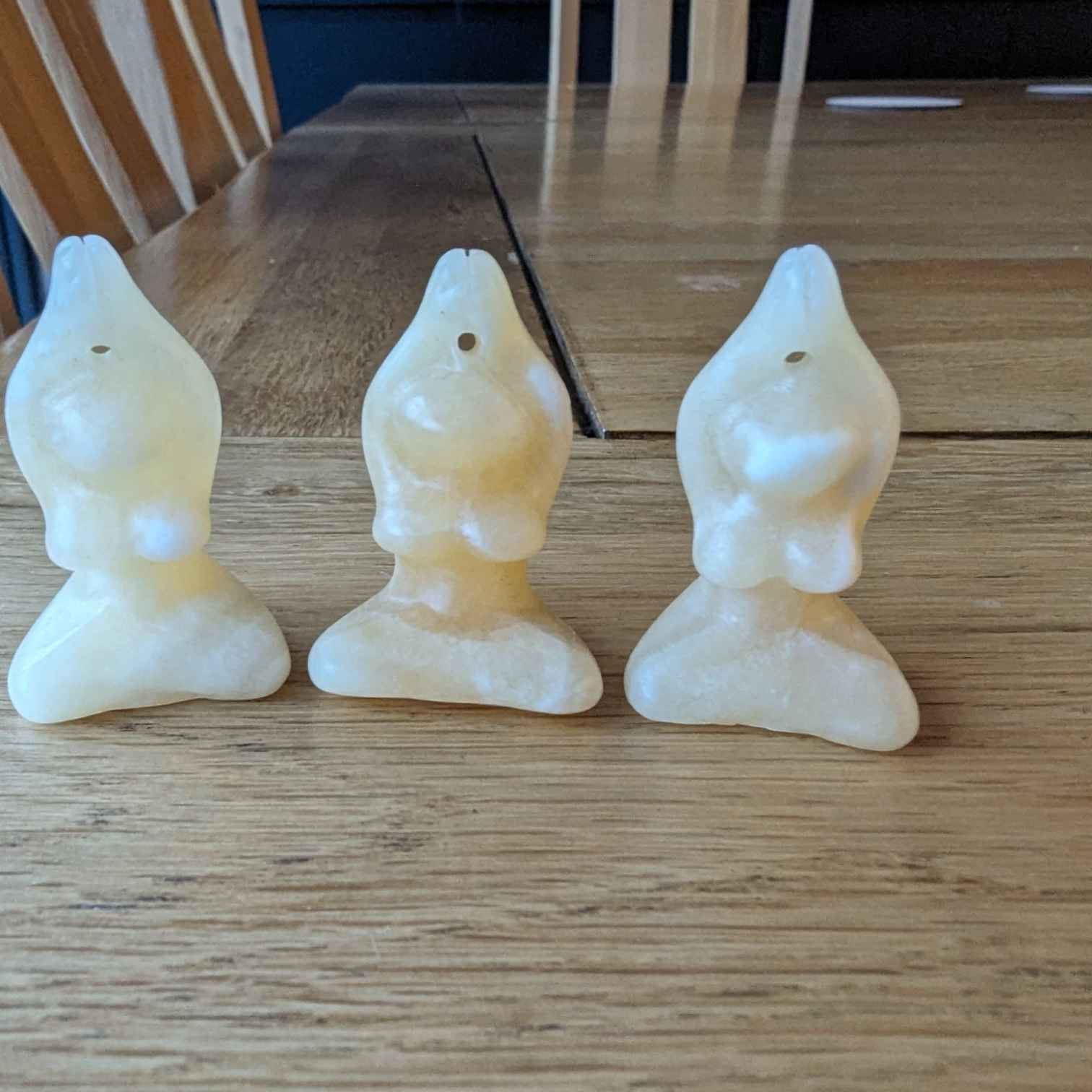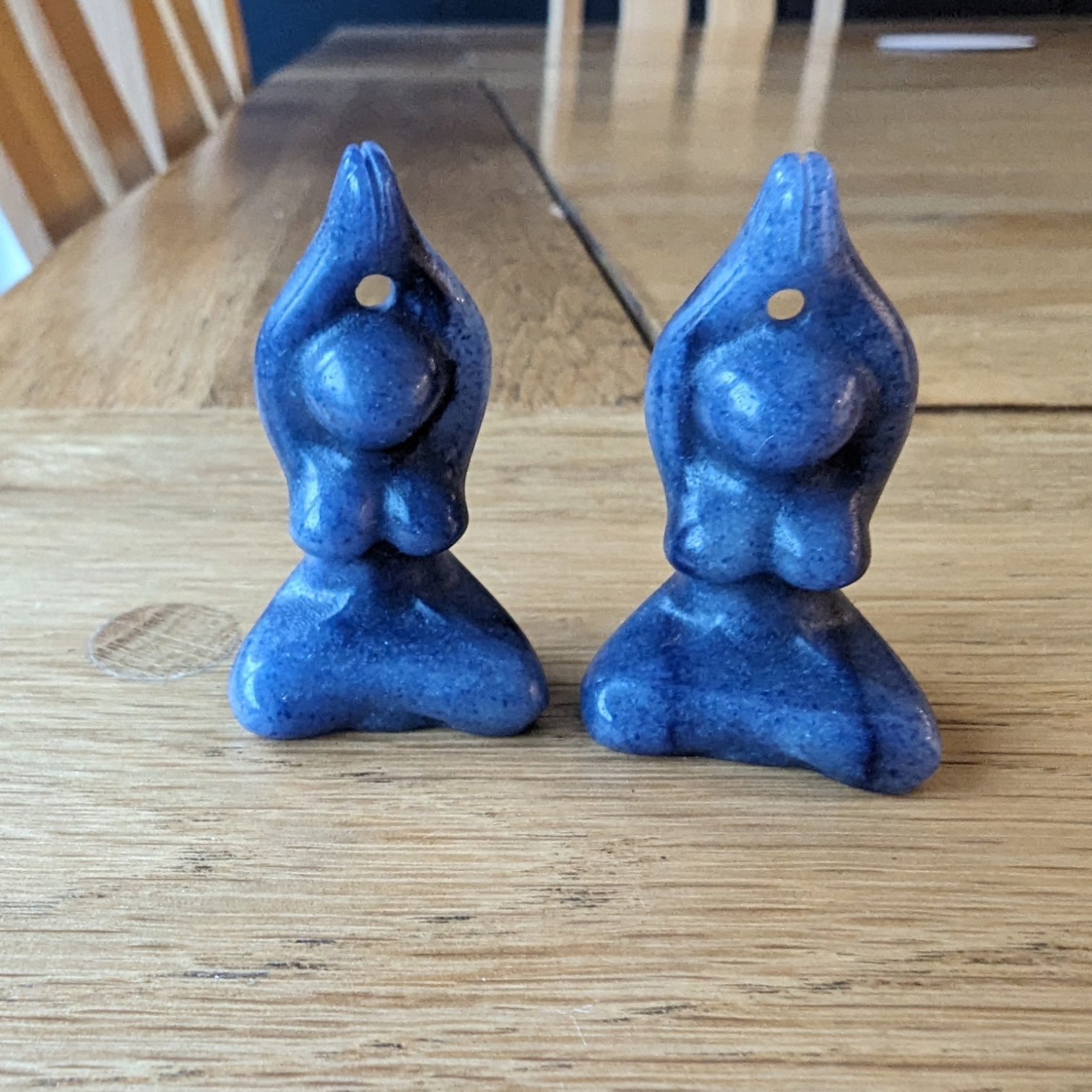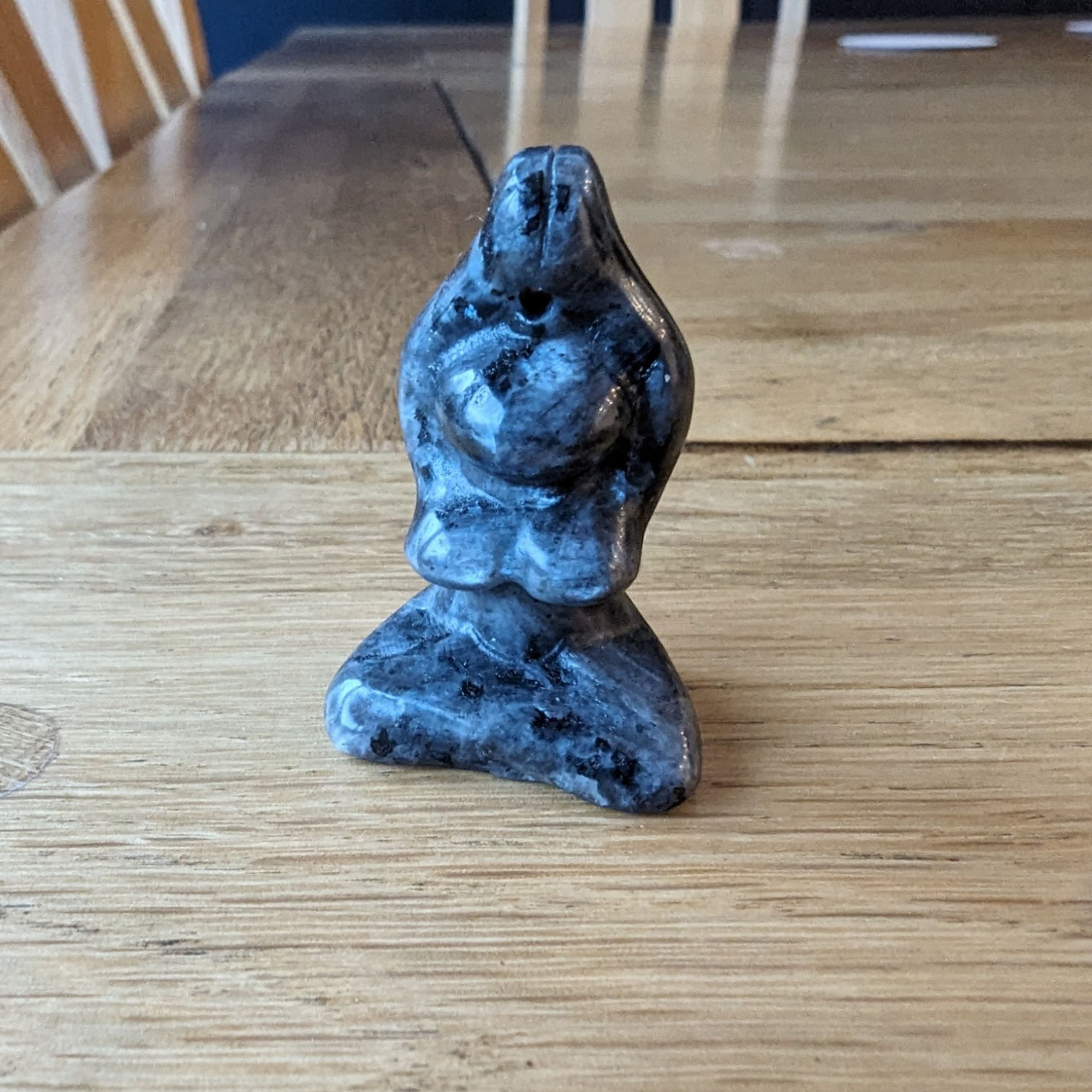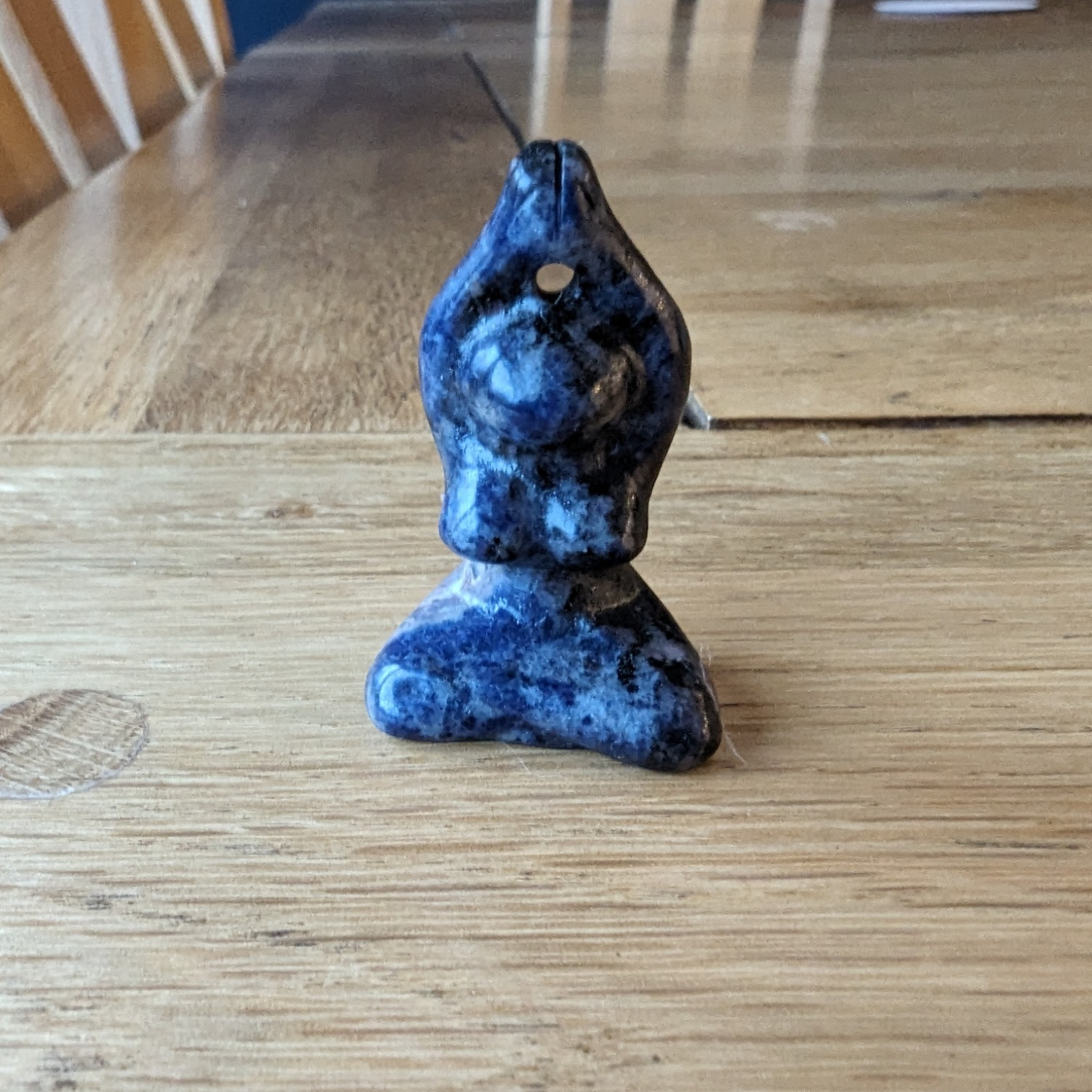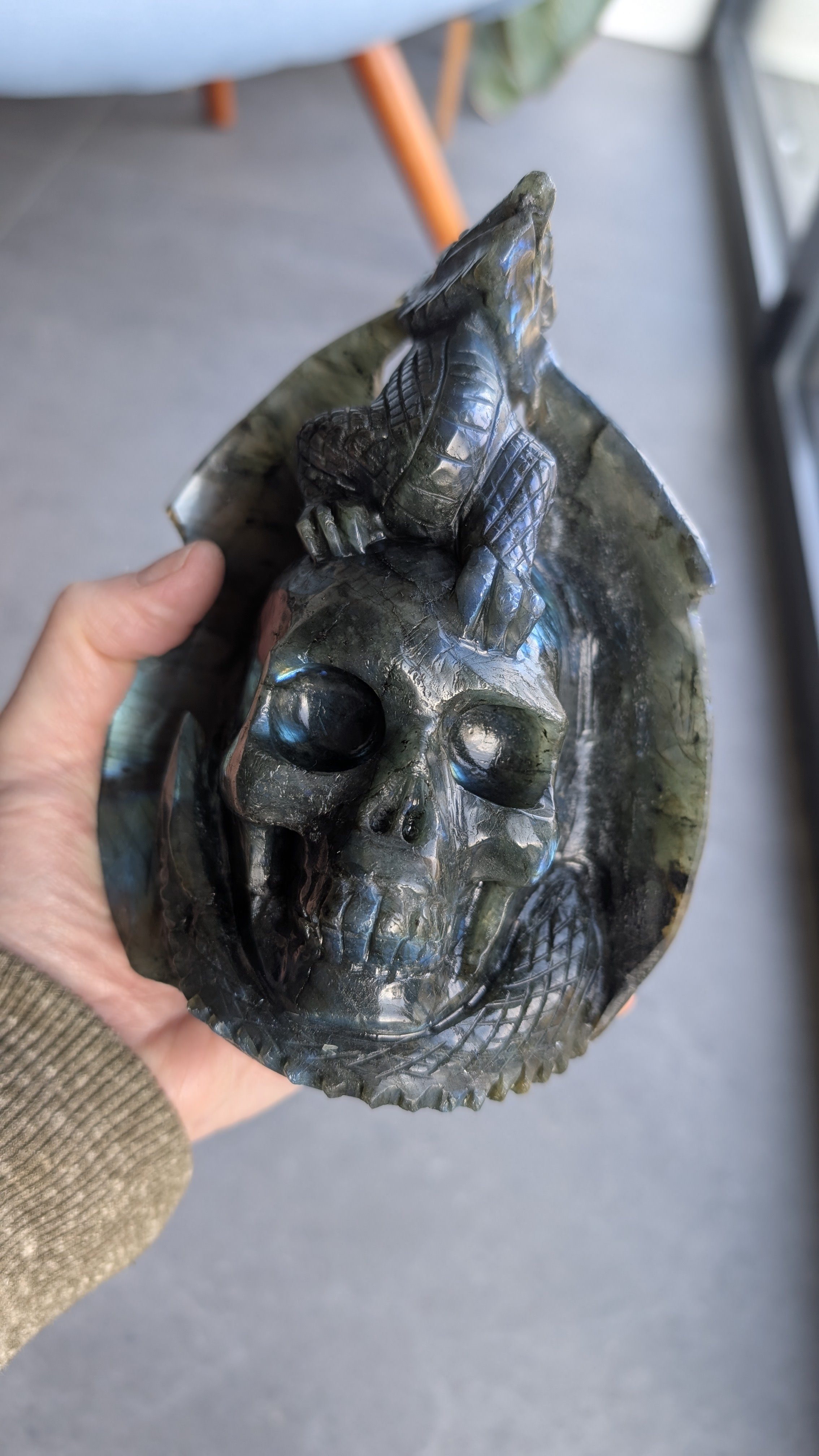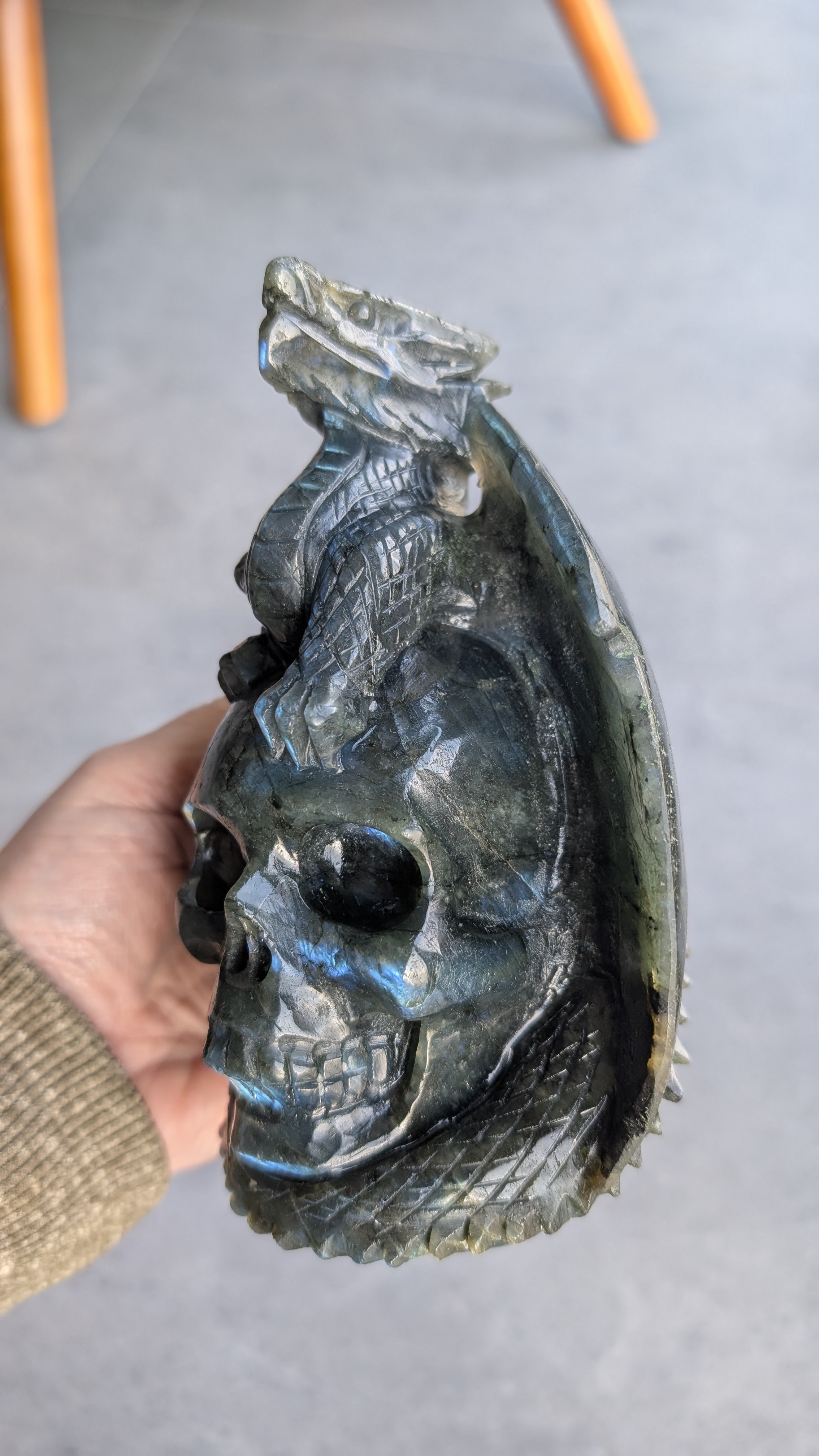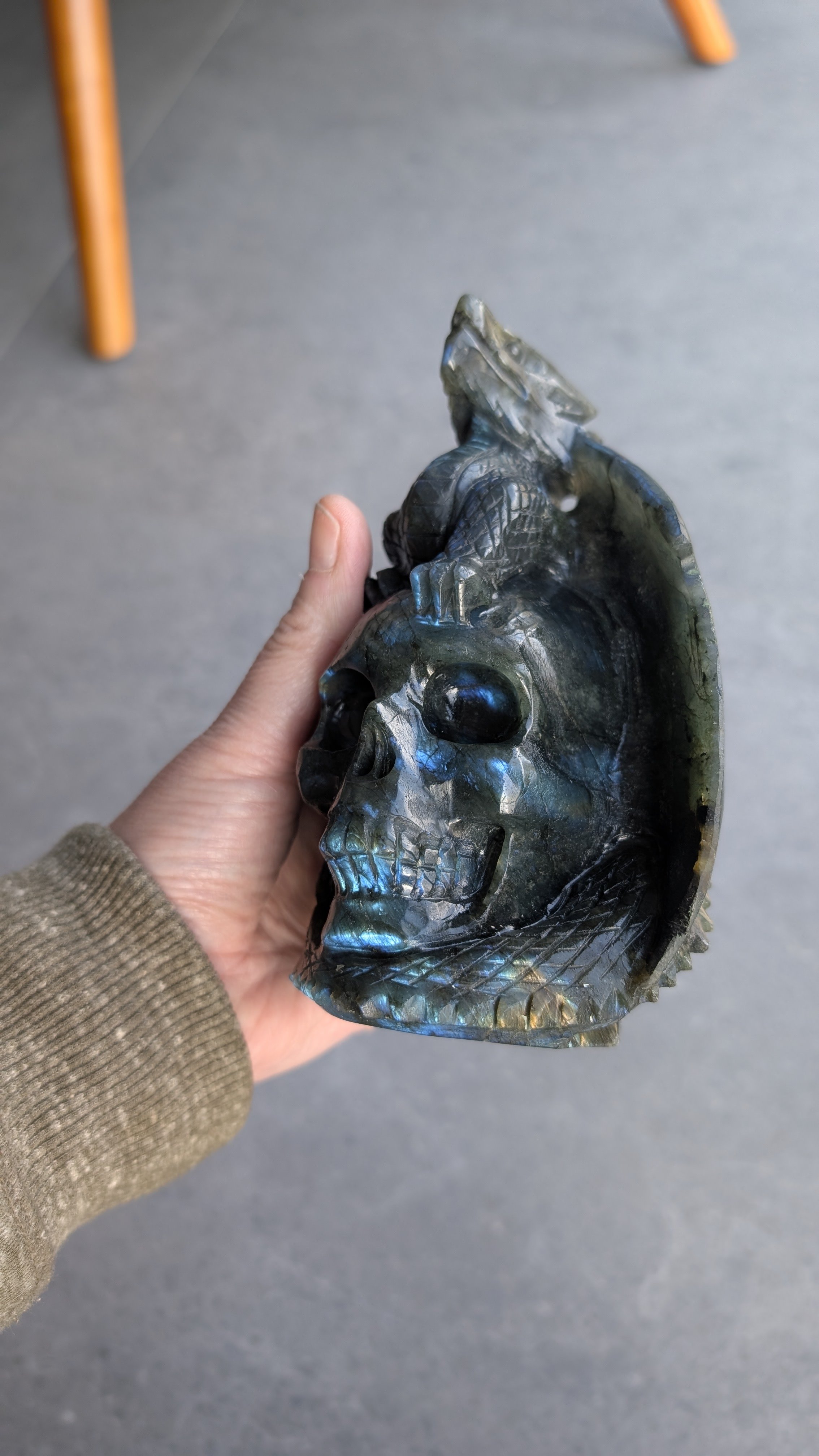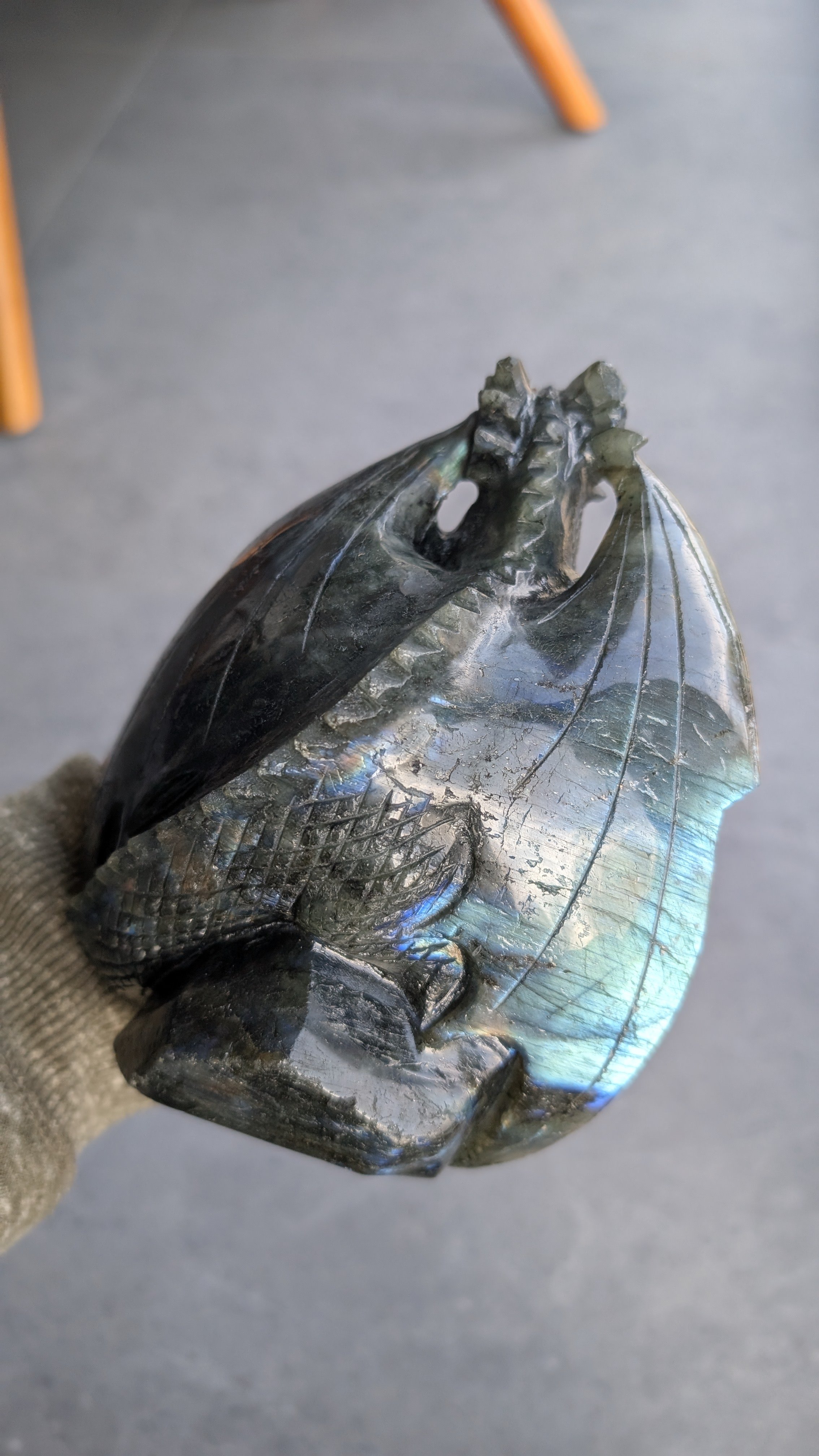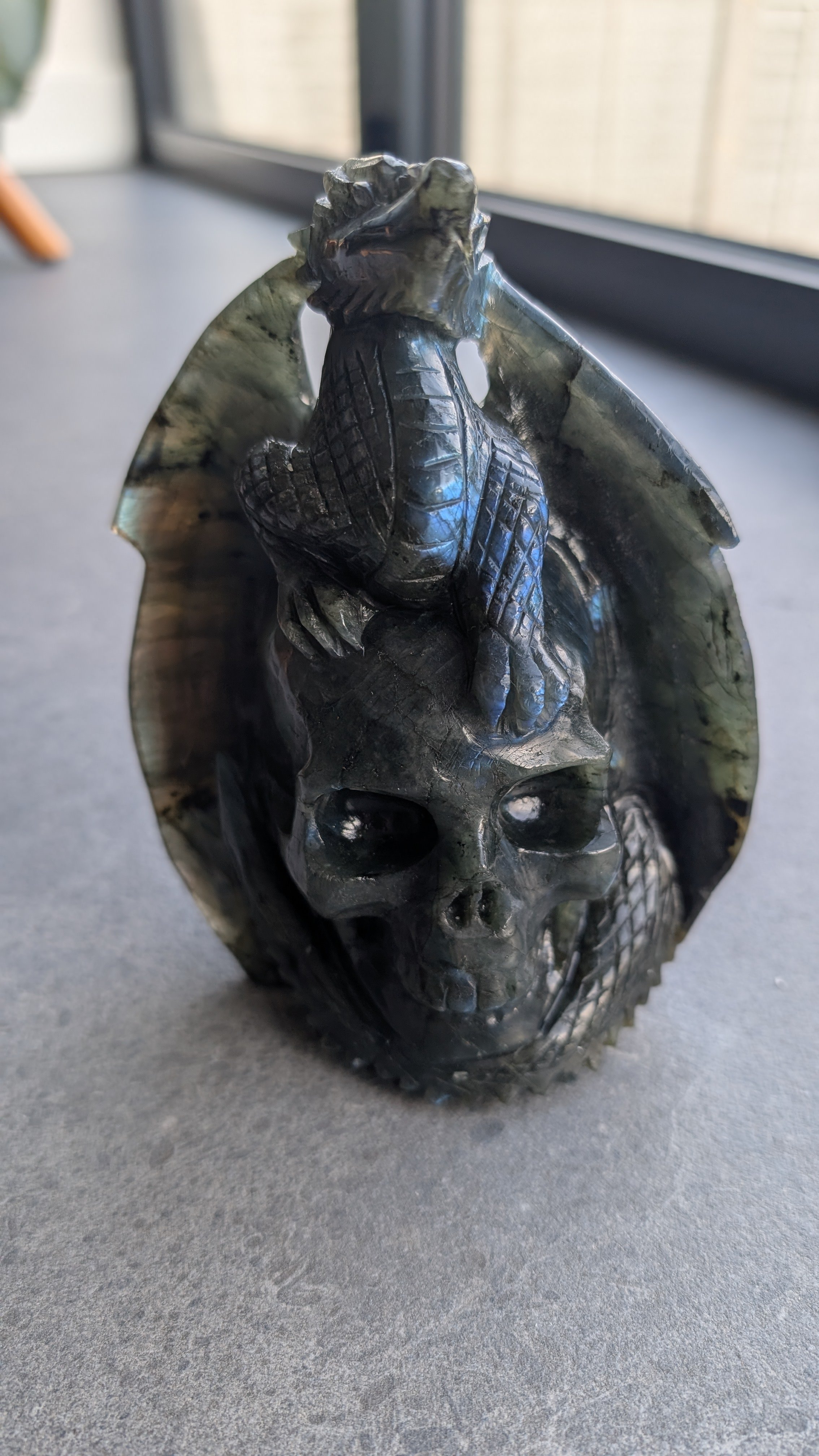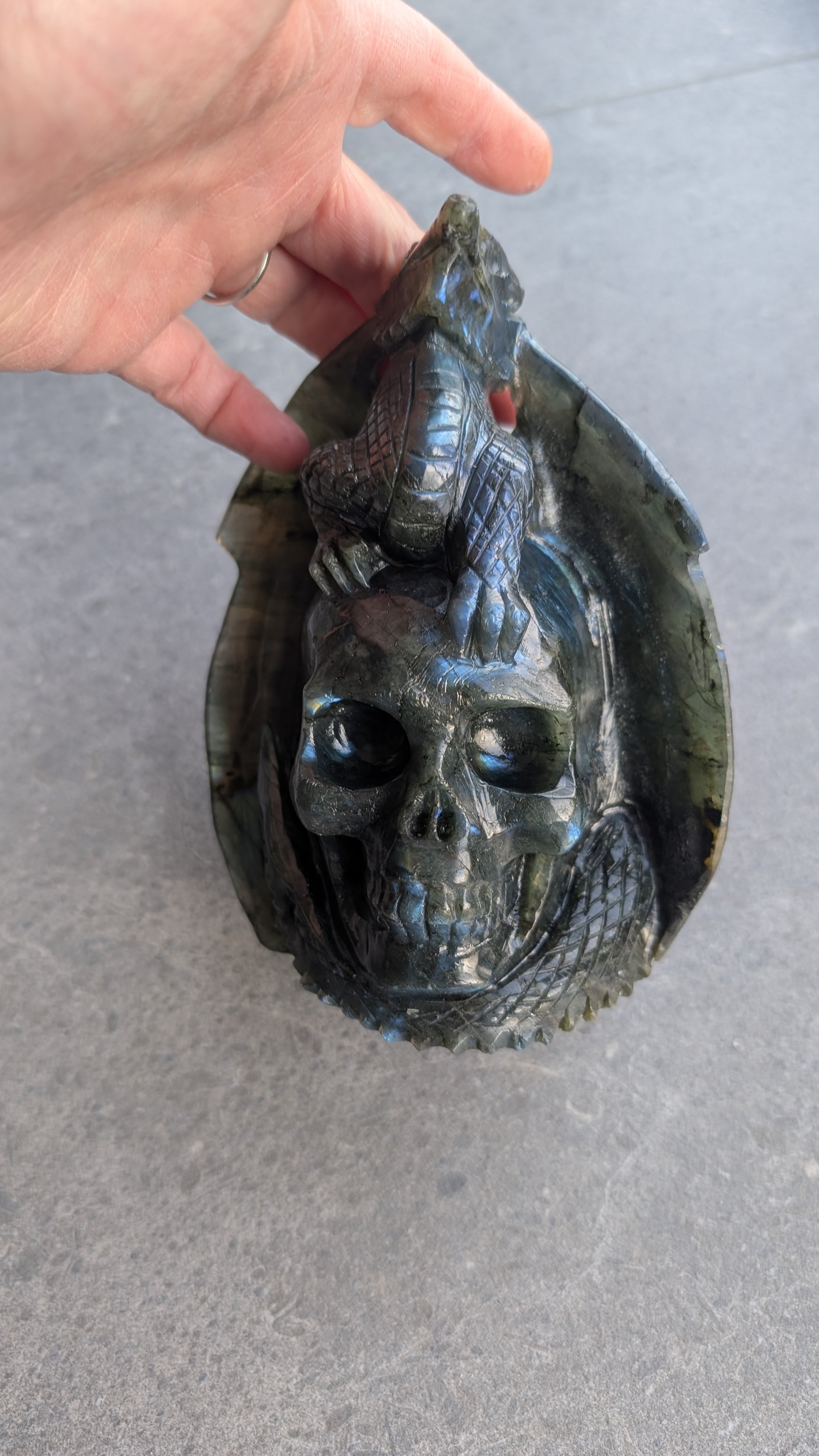 Image 1 of 5
Image 1 of 5

 Image 2 of 5
Image 2 of 5

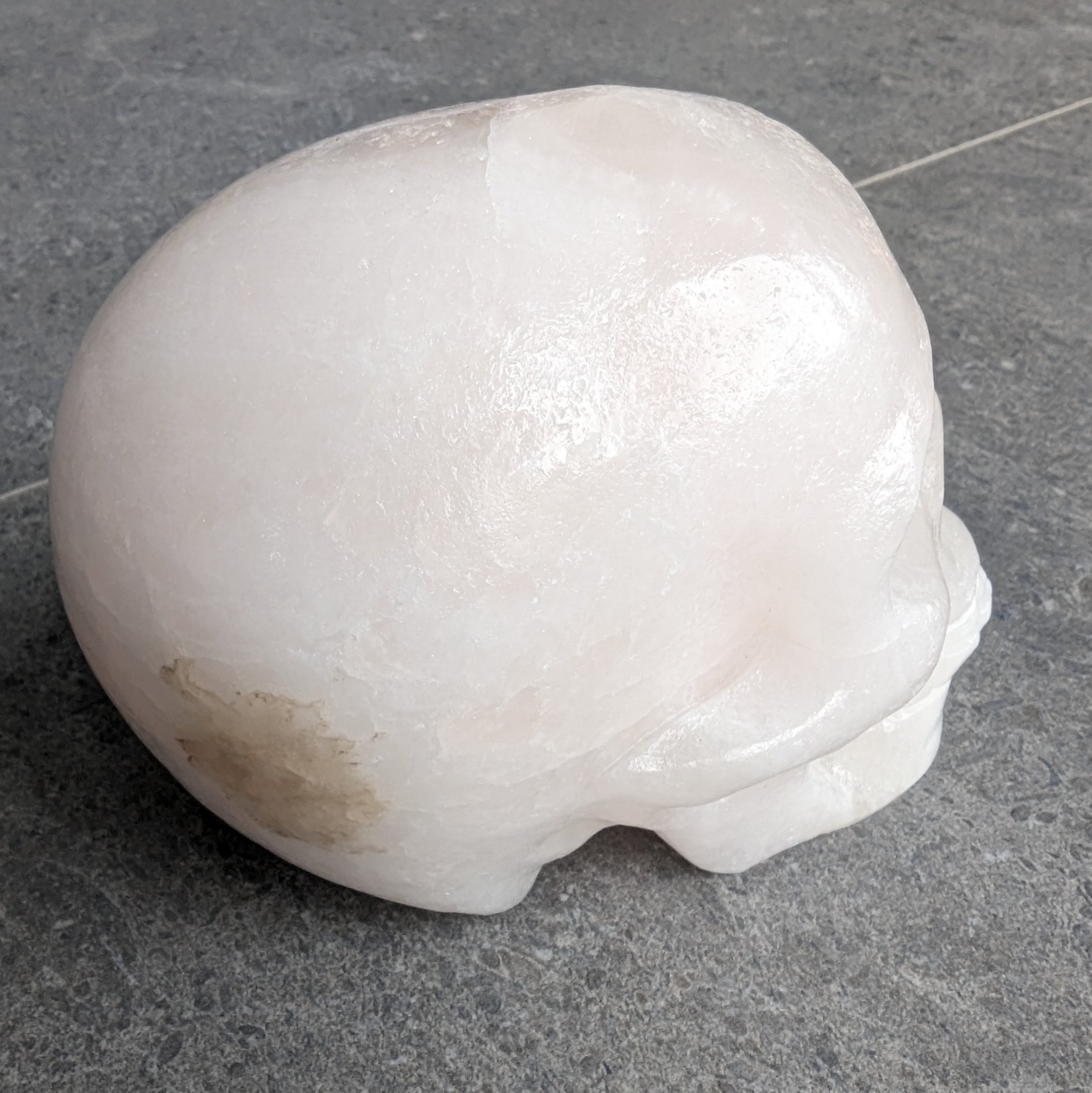 Image 3 of 5
Image 3 of 5

 Image 4 of 5
Image 4 of 5

 Image 5 of 5
Image 5 of 5






Large Pink Calcite Skull
Beautiful hand carved, natural , Pink Calcite Skull. It has been well carved and is very smooth to the touch with a delicate pale pink colouring. The skull is pink all over apart from a small patch at the back of its head. This piece also has a small , natural hole at the top of its head, which does not impact its visual appeal negatively.
Its a hefty piece at 1617g and measures +- 120mm x 80mm x 103mm.
Beautiful hand carved, natural , Pink Calcite Skull. It has been well carved and is very smooth to the touch with a delicate pale pink colouring. The skull is pink all over apart from a small patch at the back of its head. This piece also has a small , natural hole at the top of its head, which does not impact its visual appeal negatively.
Its a hefty piece at 1617g and measures +- 120mm x 80mm x 103mm.
Beautiful hand carved, natural , Pink Calcite Skull. It has been well carved and is very smooth to the touch with a delicate pale pink colouring. The skull is pink all over apart from a small patch at the back of its head. This piece also has a small , natural hole at the top of its head, which does not impact its visual appeal negatively.
Its a hefty piece at 1617g and measures +- 120mm x 80mm x 103mm.
Exploring the Significance of Skull Symbolism
Skull symbolism is a cross-cultural and timeless motif that has carried various meanings throughout history. Universally, the skull has been associated with mortality, representing the transient nature of human life. In many ancient cultures, including the Aztecs and the Celts, skulls were employed in rituals and art to symbolize death and rebirth. Similarly, in Tibetan Buddhism, the skull (Kapala) is a powerful symbol used in ritual practices, signifying the wisdom of impermanence and the transcendence of death.
Moreover, in modern society, the skull has been appropriated in fashion, art, and popular culture as a symbol of rebellion, nonconformity, and danger. Its use in fashion, especially in the form of skull jewellery or clothing embellishments, may convey one's boldness and individuality, reflecting a defiance of societal norms. Furthermore, within the realm of popular culture, the skull has become synonymous with danger and subversion, often appearing in various forms of entertainment, from literature to film, as a warning of imminent peril or as a mark of an anti-establishment ethos.
However, it's essential to note that the significance of skull symbolism is multifaceted and nuanced, often influenced by the perspective and context in which it is utilized. While for some, the skull represents mortality and the macabre, for others, it may embody strength, protection, or even the celebration of life amidst the inevitability of death.
In essence, the significance of skull symbolism is deeply rooted in human history and culture, serving as a potent reminder of the complexities of life, the inevitability of death, and the diverse interpretations that symbolize the human experience.
Is the Skull a Symbol for Luck?
The skull has been a potent symbol in various cultures throughout history, often linked to themes of mortality, power, and in some cases, luck. In certain contexts, the skull is indeed associated with luck, although the interpretation varies widely depending on cultural, historical, and personal perspectives.
In popular culture, the skull is frequently linked to luck in the form of "lucky charms" or "lucky symbols." This association is often seen in fashion, particularly in accessories such as jewellery and clothing. Many people wear skull-themed items as symbols of good luck or protection from harm. This interpretation of the skull as a lucky emblem reflects a modern and stylized understanding of the symbol.
However, it's important to note that the skull's association with luck is not universal. In many cultures, the skull carries dark and morbid connotations, symbolizing death, danger, or the precarious nature of life. For example, in Mexican Dia de los Muertos (Day of the Dead) celebrations, the skull is a prominent motif symbolizing the cycle of life and death rather than luck.
Historically, the skull has been used in various secret societies and fraternal organizations as a symbol of mortality and the transient nature of life, reminding members to live virtuously and make the most of their time. In this context, the skull is a potent reminder of the fragility of life rather than a token of luck.
In conclusion, while the skull can indeed be viewed as a symbol for luck in certain modern and subcultural contexts, its broader interpretation across different cultures and historical traditions reveals a much deeper and diverse range of meanings, from mortality and danger to the transitory nature of life. Therefore, ascribing a singular universal meaning to the skull as a symbol for luck may oversimplify its rich and multifaceted symbolism.



